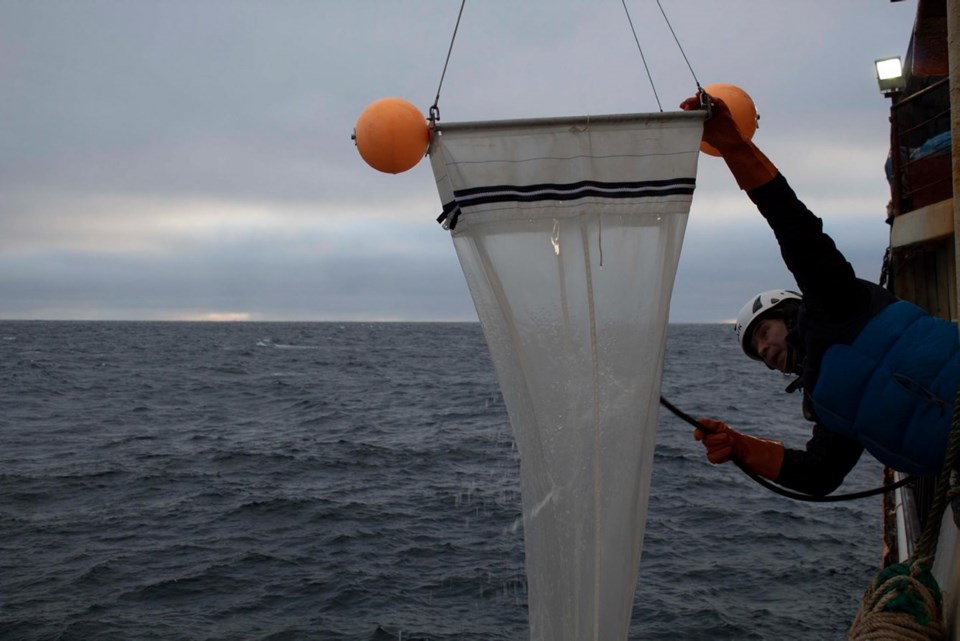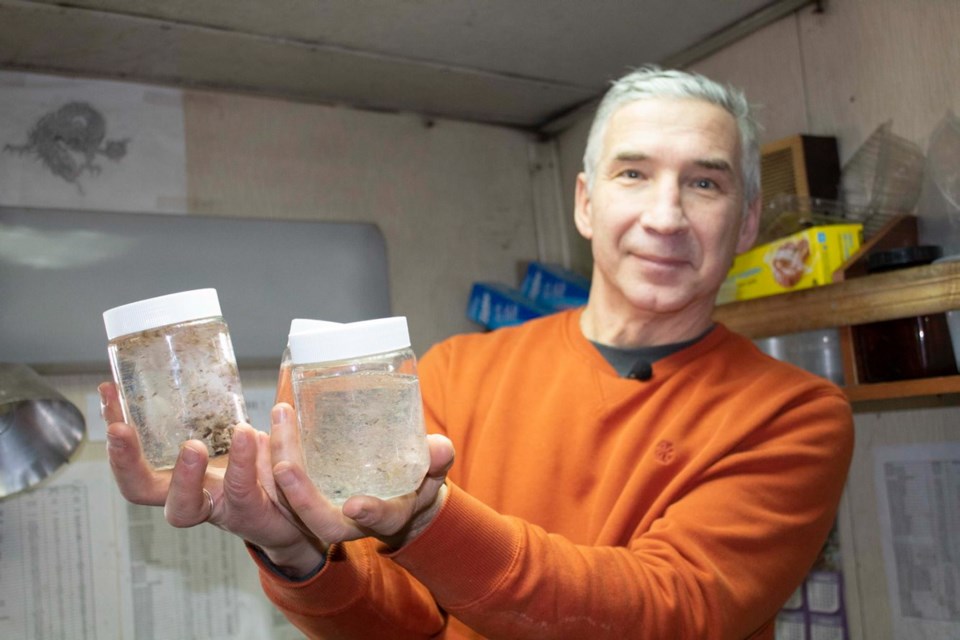Walk along any beach on B.C.’s coast and you will likely spot bits of plastic. Go out into the middle of the Gulf of Alaska in the middle of winter and it’s there, too.
“Even here on the Professor Kaganovsky, 1,000 km from human settlement and without having seen another ship in days, we see the occasional plastic bottle float by,” said a report by three scientists taking part in a groundbreaking international expedition to study Pacific salmon.
The ocean’s smallest animals mistake microplastics — tiny pieces of plastic resulting from the breakdown of larger pieces — for food, they said.
“How these particles impact the health or condition of the species that ingest them is still being studied, and understanding the distribution and how they are passed through the ocean communities is important,” said the report, by Nanaimo biologist Chrys Neville, Svetlana Esenkulova, a biological oceanographer with the Vancouver-based Pacific Salmon Foundation, and U.S. fisheries scientist Laurie Weitkamp.
Research being carried out on the prevalence of plastics in marine water and in sea life such as plankton will create a baseline of information for the Gulf, where one-third of Pacific salmon are believed to winter.
The ship is carrying 21 scientists, from Canada, Russia, the U.S., Japan and Korea, to learn about wild salmon survival, focusing on their first winter at sea.
Their goal is to understand what governs the booms and busts in salmon populations. B.C.’s prized chinook is undergoing drastic declines. The study of plastics is one of many research topics.
The chartered trawler left Vancouver on Feb. 16 and is due to return late today or early Monday. It then heads to the federal Fisheries Department’s Pacific Biological Station in Nanaimo.
Researchers are casting nets to haul in sea life — including larger creatures, such as salmon, jellyfish and squid, and smaller ones, such as zooplankton less than two millimetres in size. The smallest creatures are being saved for detailed dissection and analysis of microplastic consumption.
Plans called for 72 stops, about 60 nautical miles apart.
At each stop, Russian oceanographer Gennady Kantakov has spent 15 minutes dipping a one-metre-wide fine trawl net, called a neuston net, into the water. Most floating plastics accumulate near the sea’s surface.
Each sample is examined to check the size, colour and type of microplastics collected.

Another Russian, Vladimir Radchenko, one of the project’s chief scientists and executive director of the North Pacific Anadromous Fish Commission, performs visual surveys, counting large pieces of plastic debris floating by the ship. Some pieces are as thin as a strand of hair, but there are also large plastic bottles.
Biological oceanographer Evgeny Pakhomov co-ordinates plans with the ship’s captain and is also a chief scientist on the expedition. He is particularly interested in zooplankton, which drift on currents, and larger swimming organisms — fish, squid, crustaceans, known collectively as micronekton — ranging from two millimetres to 20 centimetres in length.
With more than 35 years of experience at sea, including as chief scientist on other expeditions, Pakhomov is a director of the Institute for the Oceans and Fisheries at the University of B.C.
The discovery of microplastic in almost every ecosystem in the world means that it can enter the food web by being eaten by small creatures such as zooplankton, probably by accident, he said.
“Zooplankton can then be eaten by small fish and further by larger fish that ends up on our table.”
Little is known about accumulation rates of microplastics in organisms — how long they stay in an animal’s gut, he said.
“We know even less what microplastics can do to organisms, and this is a developing research field,” Pakhomov said.
More than 400 stomachs from five species of salmon have been analyzed on the ship. Preliminary data did not find obvious plastic in the diet of the fish, he said. Researchers have also collected 60 zooplankton samples to analyze in UBC laboratories.
Other scientists have collected other types of sea life, which will also be analyzed for plastics.
Different sizes and types of zooplankton appear in the colder northern and warmer southern parts of the survey areas. These findings were also connected to the distribution of the major salmon species, Pakhomov said.
“Future research should be dedicated to understand how this is all linked together,” he said. “This can only be achieved if we would have the opportunity to create a similar survey during other seasons and oceanographic settings.
“We have to fill in the ‘open ocean’ black box in the salmon life cycle — how it is affected by coastal early marine period, how the first winter in the open ocean impact wandering salmon, where salmon is foraging — and we can use all this information to improve our predictions of salmon returns.”
The expedition was organized by Richard Beamish, a scientist emeritus at the Pacific Biological Station in Nanaimo, who would like to see funding for future international ventures.
Beamish estimated that between $1.3 million and $1.5 million was raised to back the venture. That includes extensive upgrading to the vessel and equipment.
B.C.’s Pacific Salmon Foundation provided the largest financial contribution of about $400,000, Fisheries and Oceans Canada contributed $250,000, the B.C. Salmon Farmers Association put in $200,000, the province invested $75,000, Harmac Pacific donated $25,000 and the rest came from other private funders.
On Friday, a new $143-million federal-provincial fund to support wild salmon was announced in Victoria.
“We need a better understanding of why some returns from open oceans have been so poor in recent years,” Fisheries Minister Jonathan Wilkinson said.
“Something is happening in the North Pacific and we need to understand how salmon returns are being affected.”



